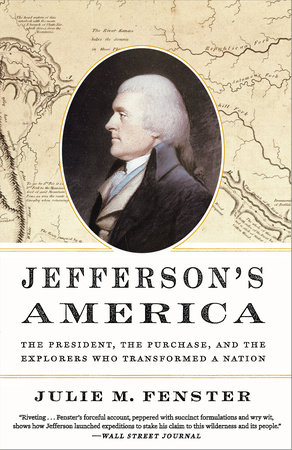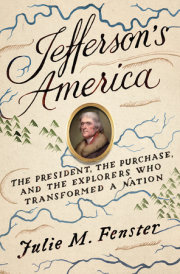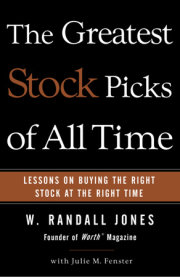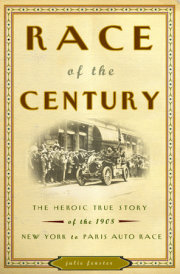INTRODUCTION John James Audubon, the artist, left his family at home in Ohio in October of 1820 and travelled in a slight state of desperation to New Orleans, a well-worn city newly vibrant and very rich. As he sat on a flatboat heading downriver, he gazed at the birdlife on the water. When he couldn't do that, he liked to look at his billfold. It was stuffed, in lieu of money, with letters-of-recommendation from powerful people in the North; elegantly written, but no less gushing for that. He fingered the letters, re-read them and even copied them one by one into his diary. At 36, Audubon may have been gripped by a compulsion to draw wild birds, but he was headed to New Orleans to make money painting rich humans, preferably free-spending ones. He chose a city that was chock full of them.
Even as demand for cotton grew in the early 1800's, New Orleanians continually managed to find more of it, along with ways to turn bigger profits at every stage. They didn't grow cotton in the city, but they bought it and stored it, sold it and shipped it, banked it as currency, traded it as hardgoods and gambled on it in the form of futures. The fact that New Orleans' prosperity soared so steeply after 1803, when the city was acquired by the United States in the Louisiana Purchase, was anything but a coincidence. The Spanish, when they owned Louisiana up to1801, clamped down on the slave trade for long spans and enforced laws giving the slaves rights. The French, who took possession of the territory for two years after the Spanish, didn't show enough interest to make any changes. Once the Americans were in charge, though, new laws favored slave-owners and traders who shipped them in by the hundreds. The price of labor, at least in monetary terms, dropped. New Orleans was soon clogged to the walls with cotton. Like an old
bon vivant, finally with money to burn, it was the latest favorite of a whole swarm of fortune-seekers.
No sooner did Audubon arrive to join them in early January, than he prepared to separate himself from the crowd. His letters of introduction were so irresistible that he made the decision on his first day in New Orleans to see the governor before anyone else. That plan lasted until his second day, when a pickpocket stole his billfold. Shattered to the core, Audubon had the grace to spare some pity for the thief, who had nicked such a nice, plump wallet only to end up with a bunch of letters. For days afterward, Audubon's spirits were "very low," but they perked up after a visit with an acquaintance named David Prentice, an engineer from Philadelphia. Audubon confided to Prentice that the city resident he most wanted to meet -- aside from anybody in need of a portrait -- was a certain naturalist who had once been famous. With that, Audubon finally received a bit of good news. "Mr. Prentice," he wrote in his diary, "gave me a letter to Doctor Hunter, whom I wished to see to procure the Information I so much Need about the Red River."
That part didn't bode well. Dr. George Hunter had only seen about 25 miles of the 1,300-mile the Red River. Back in 1804, President Thomas Jefferson had arranged Hunter's role in the exploration of a section of the lower Mississippi's western tributaries, including a short run on the Red River. Afterward, he included Hunter's exploits in a special report to Congress; it was immediately published in book form, finding a wide readership. Just fifteen years later, though, the lower Mississippi region was no longer a frontier. Those days when every river, stream and brook was a separate mystery had become quaint. By then, Hunter, the living relic, was a businessman in New Orleans, turning out sheet metal and soap.
In April, Audubon made his way to Hunters Mills, the collection of small factories that Hunter owned, outright or in partnerships. Audubon's assistant, a teen-aged friend of the family from Ohio, accompanied him, lugging a portfolio of Audubon's artwork. "Low in funds," Audubon wrote, starting his description of the day, "Travelled as far as Dr.
Hunter the renowned
Man of Jefferson -- We Came on him rather unaware."
"The good Man Was Pissing," Audubon continued, "We Waited and I gave him My Letter of Dr. Prentice --." After that, the interview faltered. It came to a complete halt, if Audubon asked Hunter to describe the Red River. "This
Physician May have been a Great
Doctor formerly," Audubon wrote, "but Now deprived of all that I Call Mind I found it
Necessary to leave [him] to his Mill's Drudgery --."
Something stinging or just sad bound the contrast that Audubon drew between the explorer that he anticipated and a seemingly vague 65-year-old making water in the yard. Yet for all of his disdain, tinged as it was with sarcasm, he gave Hunter a title that fit: "the renowned
Man of Jefferson." When Hunter was exploring rivers for Jefferson in the newly acquired Louisiana Territory, leading an expedition with Mississippi's William Dunbar, he did his job gathering information on the terrain and the local residents. Even in the midst of the celebrated trip, he might not have looked like a hero at first glance, if that was what a
Man of Jefferson was supposed to be. He shot himself by mistake. He designed a boat for the trip that didn't float and he was so interested in money that Jefferson secretly warned Dunbar not to let him spend all his time looking for gold mines.
Hunter earned his title, "Man of Jefferson" not by doing everything right, but by going West when the President asked. He was one of eight people that Jefferson either hand-selected or oversaw as leaders of expeditions to explore the Louisiana Territory, before and after it was purchased. Meriwether Lewis, whom Jefferson had already sent to trace the Missouri River and a northwest route to the Pacific, was 29 when he left. William Clark was 33. Hunter was fifty when Jefferson called on him, a wholesale chemist with a busy family in Philadelphia. The fact that curiosity won out over complacency was one mark of the men that Jefferson sought. It didn't prevail with others whom Jefferson asked and there were said to be many: comfortable or aged easterners who turned down the chance to endure months of hard labor and dangers as sly as malaria and as sudden as the strike of a water mocassin.
In choosing explorers, Jefferson had in mind a very special combination of characteristics. He succinctly described the ideal as "a person who to courage, prudence, habits & health adapted to the woods, & some familiarity with the Indian character, joins a perfect knowledge of botany, natural history, mineralogy & astronomy." He added gloomily that no such person existed in America. He'd looked. Making it difficult was the fact that American colleges had yet to offer courses in the pure sciences, such as chemistry, or social sciences, such as geography. Making it even more difficult, according to Secretary of War Henry Dearborn, was the money-mad atmosphere of the United States, circa 1803. Dearborn was assisting the President in seeking men for the expeditions. In the rare cases in which a person might be interested or even expert in science, he wrote, their study goes "just so far as it may be subservient to this all devouring passion of gain."
In looking for explorers for the new territory, Jefferson may have wanted scientists or geographers, but he eventually had to broaden his criteria. Peter Custis, who ultimately made the trip to the Red River for Jefferson, was a medical student. Thomas Freeman, the leader of that expedition, was a surveyor. In that work, Freeman was already an explorer on a small scale, trained to make mathematical sense of the most craggy or forbidding landscapes, despite the even craggier people usually hovering nearby, awaiting his determinations. The controversy that accompanied the work of a surveyor in Freeman's day hardened his personality. At the same time, years of work on remote tracts made him physically ready for uncharted territory, while his background in civil engineering gave Jefferson confidence that he would maintain the standards of science.
A perceived moral standard was another necessity. Many of the people attracted to lands beyond the outskirts of civilization wanted to escape society's disapproval, or, more specifically, inconvenient spouses. Dr. John Sibley, an American-born physician who lived in Louisiana Territory before the Purchase, wrote accounts of the terrain, based in part on his own travels. His sensitive reports on the Native-Americans were especially valuable. In fact, Sibley went a long way toward fulfilling Jefferson's ideal for an explorer, but he had an unresolved marital history in the east. According to rumors hotly denied, he started families wherever he went. The specter of eastern newspapers abandoning the glories of western exploration in favor of a debate -- or chart -- exposing the explorer's women friends was as unthinkable as it was probable.
Perception was important from on both sides of the border. Jefferson was adamant that the men he sent on the expeditions into Louisiana territory be capable of making accurate measurements, of bringing modern equipment and demonstrating the discipline to use it. Aside from the results and aside from the science, they needed to look like serious researchers. The Lewis & Clark expedition, having been launched before the Louisiana Purchase, penetrated lands to the north that were only cooly contested by European nations. They traversed a region that included what are now the states of Missouri, Nebraska, the Dakotas, Montana, Idaho, Washington and Oregon.
After the Purchase was announced, Jefferson focused on the exploration of the more southerly region now occupied by the states of Louisiana, Arkansas and Oklahoma. Jefferson may have purchased the Louisiana Territory from the French, but he had to wrest it from the Spanish. They owned outright most of what is now Texas, along with the region further west. The Spanish had a long history in the Americas, of course, and on hearing of the French decision to sell the enormous territory, Spanish officials openly contended that the deal was illegal and that if anyone was going to take Louisiana from France, it would be Spain. Privately, most Spanish officials assumed that the United States intended to continue southwest. Some accused it of plotting to conquer Mexico, below the Rio Grande. After the announcement, Spain posted some of its toughest army officers to forts in Texas, along with added troops.
The fact that the Jefferson Administration is best known for the Louisiana Purchase of 1803 and not for a disastrous War of Louisiana two years later -- a war which was soberly expected, but never occurred -- is the result of a diplomatic attitude that reflected Jefferson himself. His emissaries, Robert Livingston and James Monroe, had taken the initiative overseas to make the Purchase. Once it was announced, Jefferson's job was to keep it. Moreover, his personal goal was to extend it. The Spanish were perfectly right to be nervous. The tension along the border between the two nations was real, even though -- or because -- no border existed. The French left that detail to the new owners.
To say that Jefferson responded to the new territory in a personal way would be an understatement. He had many enthusiasms in life, but typically adopted a measured tone in discussing even his favorite pursuits. One exception was his farm at Monticello. It was not even the house, to which he was devoted, but the land and sky that broke down his reserve: how it looked, morning, noon or night; what it produced (alone or when cultivated), and its endless potential. The other exception was Louisiana. "Louisiana is the President's favorite Topic on all occasions," reported the British Ambassador in 1804, "He introduced it as usual, when I made him a Visit on his return [to Washington] from his Estate in Virginia." The previous British ambassador, who had remained in Washington, also commented on Jefferson's effusiveness on the subject and he was far less patient with it, informing the Home Office that the Louisiana Purchase "has elevated the President beyond Imagination in his own Opinion." Calling Jefferson "the vainest of men" in relation to Louisiana, the ex-ambassador then accused him of hogging all of the credit for the transaction. Vain or not, Jefferson built a strategy on a truth. Right from the start and without having to think about it, the President made his name and Louisiana practically synonymous. If American voters noticed, it was politics. When foreign ambassadors noticed, it was diplomacy.
Jefferson's feathered aggression in bonding himself to the Louisiana Territory inspired the expeditions that he sent as soon as possible into the territory closest to the disputed and blurred borderland. His instinct, borne of his relationship to the very dirt under his feet at Monticello, was to know it better than anyone else. His explorers needed to be continually curious, travelling not only get somewhere, but to take possession by taking minute interest in the land itself. The expeditions were designed to be inoffensive to the Spanish, as well as the Native American nations encountered. One might even say the expeditions were loudly inoffensive; Jefferson mentioned them frequently, but never without saluting the lofty research which was their sole stated mission. The strategy required finesse. In another case, a Louisianan named Philip Nolan periodically went into what is now Texas (then a Spanish possession) to gather mustang horses. When the Spanish there learned that he had slipped geographical information about "Tuxis" to Americans, including his correspondent, Thomas Jefferson, they let him know they were displeased. On his next trip, in 1801, a Spanish detachment of soldiers found him in the midst of a round-up and executed him.
Despite the dangers of exploring the Louisiana Territory, either to the north or south, Jefferson found leaders who shared his goals. Each would pioneer not just on the land, but over it, enlarging the concept of the United States, before anyone in the East truly could. That included Jefferson. In terms of the West, he also stayed home and he also waited, with the rest of the citizenry. In fact or in spirit, he was never much closer to Louisiana than the front portico at Monticello, which he designed to face squarely to the west. Yet Jefferson could be a tireless traveller, when he wanted to be. During five years in Europe from 1784 to 1789, he immersed himself in European culture. For him, as for any American in the founding generation, to look at Europe was to look at the past. He committed the American West, which he believed to be the future, to others.
Before anyone else, he handed it to those varied
Men of Jefferson who explored it for him. Meriwether Lewis and William Clark were earliest and have long been the most famous. The West as Jefferson saw it presents an even wider picture, though. The array of expeditions he fostered grew out of a unique, Monticello diplomacy that insisted on America's place in the West.
Copyright © 2016 by Julie M. Fenster. All rights reserved. No part of this excerpt may be reproduced or reprinted without permission in writing from the publisher.






